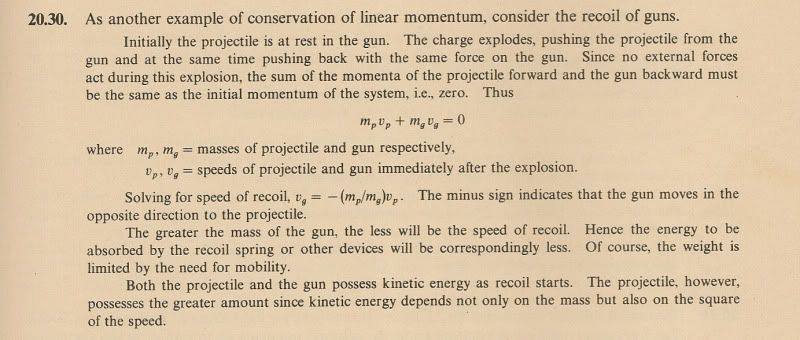Contention: An M1 Garand produced less recoil than a Mauser 98k, using typical WWII ammunition due to the fact that the M1 is gas operated.
I anyone up to the challenge of proving (as in physics, Newton's laws, Boyle's laws, etc.)
The person claiming the above states that the inertia of the M1 stock (stay at rest), does not allow the stock to recoil until the bullet has passed the gas port.
However, when I look at Newton's Third law:
In any event, I would be interested in a non-anecdotal, scholarly explanation of the above contention. At one time I would have attempted to do the math, research on weights of the two rifles, comparative bullet weights comparative chamber pressures, etc., but at 71 I think that would result in a futile exercise.
Can anyone help?
Addendum: M1 Garand 9.5 lbs (empty) M2 Ball ammo:152 grains at 2,805 fps
98k Mauser 7.1 lbs (empty)187 grains at 2,700 fps.
I anyone up to the challenge of proving (as in physics, Newton's laws, Boyle's laws, etc.)
The person claiming the above states that the inertia of the M1 stock (stay at rest), does not allow the stock to recoil until the bullet has passed the gas port.
However, when I look at Newton's Third law:
It seems to support the concept that recoil is generated at the instant (the word simultaneously) of firing.When one body exerts a force on a second body, the second body simultaneously exerts a force equal in magnitude and opposite in direction on the first body.
In any event, I would be interested in a non-anecdotal, scholarly explanation of the above contention. At one time I would have attempted to do the math, research on weights of the two rifles, comparative bullet weights comparative chamber pressures, etc., but at 71 I think that would result in a futile exercise.
Can anyone help?
Addendum: M1 Garand 9.5 lbs (empty) M2 Ball ammo:152 grains at 2,805 fps
98k Mauser 7.1 lbs (empty)187 grains at 2,700 fps.
Last edited:


